Zhiyun Smooth 5 Review & Tutorial
A couple of months ago, we held a poll on YouTube to see how happy people were with the new DJI OM 5. 20% loved it, 31% were underwhelmed but a whopping 48% of you asked “when will we get a heavy duty dedicated smartphone gimbal?”
Thing is, if we have a larger phone and we want to add a case, lenses and filters until now our only choice was to get a hybrid gimbal designed for both bigger cameras and smartphones. Problem is they tend to be expensive and fiddly to set up. There was simply no dedicated smartphone gimbal designed for this purpose.
Until now…
This is the Zhiyun Smooth 5. Can it handle a big phone with extras? Yes. Is it everything we could ask for in a gimbal for smartphone filmmakers? Uh, almost.
Well, let’s take a look.
First Impressions
Many of us have bigger, heavier smartphones. I have 2 of the heaviest: an iPhone 12 Pro Max and a Samsung Note 20 Ultra. Plus, I often like to add filters and lenses, which makes them even heavier.
The design of the Zhiyun Smooth 5 feels pretty solid, more pro. At the same time, it still looks pretty simple and it has the regular smartphone clamp. Mounting a smartphone is so much easier than with a hybrid gimbal like the Zhiyun Crane M2.
Zhiyun says the Smooth 5 comes with magnetic steel motors which have upgraded algorithms for smoother performance. As well, the clamp for the phone is wider.
Max Payload
We’ve had conflicting reports on the max payload of this gimbal. I’ve seen one YouTuber say 280 grams, another said 360 grams. The Zhiyun Smooth 5 manual says 300 grams.
If you have a big phone, case, lens and filter you’ll be going over 300 grams. But with the balancing mechanism on this gimbal, I believe we can get away with going over that 300 gram limit.
But with the balancing mechanism on this gimbal, I believe we can get away with going over that 300 gram limit.
What’s in the Box?
There’s 2 options when you buy, just the basic gimbal and the combo option.
With the combo option, you get this carry case and you get the magnetic fill light, with magnetic coloured filters. However, that’s a $50 extra cost. And in the UK it’s a £50 extra cost, which is equivalent to $70.
Each motor needs unlocking. The pan axis motor has a lock switch which you need to flick across before powering on. The other 2 need twisting to unlock. And they just click open easily.
The Zhiyun Smooth 5 is quite a big gimbal compared to fold up devices like the DJI OM 5 or the Smooth Q3, as we would expect. Straight away, we can see this looks like a real filmmaker’s tool.
One distinctive feature of the Zhiyun Smooth 4 was the control wheel at the side which allows you to zoom or pull focus. They have kept this for the Smooth 5, which is great for more serious filmmaking. You also get lots more controls on the handle, including a mode button.
So let’s see if it can handle my iPhone 12 Pro Max with Moment thin case, Anamorphic lens and a Tiffen Pro-Mist filter.
The Big Phone Test
When you’re mounting a heavy phone with extras, the big problem is that the weight is all at one end. With the Smooth 5’s adjustable arm, we should be able to move the weight towards the middle and balance it out.
This is actually how the Zhiyun Crane M2 balances as well. Except, with the Crane M2, I wasn’t able to move the arm far enough to compensate for the weight at one end so I had to customise it. But with the Zhiyun Smooth 5, I am able to move the arm far enough.
There’s also numbered marks on the arm to make it easier to move it to the right position when you’re rebalancing for different setups. We can also adjust the balance vertically as well, by sliding up and down.
When I power it on, it seems to handle the weight just fine. But I’m going to give a proper test and see if I have any problems with the weight.
Gimbal in Shot
One problem we can have when using a gimbal is when we’re using a wider angle lens than the main camera. Sometimes the roll axis motor will end up in the shot. But with the Smooth 5, the motor that would normally be a problem is placed at the back. Meanwhile, the mounting clamp is pressed up against the phone, out of shot as well.
That does mean the arm might partially obstruct our view of the phone screen at certain angles, but this is definitely the better option. There’s nothing worse than shooting a bunch of stuff, only to find the gimbal motor in shot, meaning you have to then crop out the gimbal and lose part of your frame.
I tested the gimbal with an anamorphic adapter as well as the iPhone 12 Pro Max’s ultra wide camera and the gimbal was never in shot at any time.
Phone Clamp
My iPhone 12 Pro Max with the Moment case fits in the clamp no problem. As it has this angle in the teeth of the clamp, it does tend to scrunch up the tcase a bit. Mainly because the iPhone has square edges and this case is the thin version.
But I tried with a thicker case and that worked fine. Note that you can only push the phone in so far, as it presses up against the tilt axis motor. Which is why we need to be able to adjust the arm for balancing.
One small downside of this is you cannot connect a microphone via the charging port at the end of your phone. And we can’t turn the phone around as then the camera will be obscured by the arm.
However, Zhiyun suggested we could pull the phone away further from the side of the clamp. I think this would be fine if we’re using the gimbal without lenses and filters. But with extra weight at that end and then moved even further away from the pivot.
Portrait Mode
The way the gimbal is designed, you cannot simply switch from portrait to landscape at the press of a button. The phone needs to be mounted differently for each, which means it will take you a minute or so to change. You’ll have to power off the gimbal, remove the phone, switch between orientation, remount the phone and then power on again.
That said, I found you can easily get a portrait shot just by turning your wrist 90°. It seems to be designed to do that as it kinda clicks into place. It probably wouldn’t be too comfortable holding it that way for long, but if you just need a quick portrait shot, it’s easy.
Another 90° twist and the gimbal goes into underslung mode for those ground level shots.
Smooth 5 Fill Light
The new thing with gimbals seems to be the addition of a fill light. The Smooth Q3 came with one, which you can rotate. The Smooth 5 Combo set comes with a detachable magnetic fill light. You can mount it to face forwards or backwards.
There’s also different coloured filters. It seems that this would also add to the weight the motors have to cope with, a little bit. Plus, they also drain the battery of the gimbal faster.
When you turn the brightness up to max, this little is truly powerful.
Battery
The Zhiyun SMOOTH 5 will last up to 12 hrs on a full charge. But that would be reduced to about 4.5 hours, if you were using the fill light the whole time.
Charging time for the battery is about 2 hours or more.
Smooth 5 Motor Range
The great thing about this gimbal is that the motors have a pretty good range. The tilt motor can move up to 309°, roll 300° and pan does the full 360°.
That’s great for those crane shots with the gimbal on an extension arm, like this monopod. With the DJI OM gimbals, you have to do a sideways crane shot due to the limited tilt axis. But with the Smooth 5 you can make a forwards motion, which is easier to control and the movement is maybe more useful, as well.
Focus / Zoom Control
To use the focus / zoom control wheel your smartphone needs to be running the ZY Cami app. Just turn the wheel to adjust. I like the feel of this control wheel. Feels solid and makes getting smooth focus pulls very easy.
To switch between focus and zoom, there’s a button inside the wheel.
Smooth 5 Gimbal Modes
The Smooth 5 has all the modes we’re used to in a gimbal. There’s Pan Follow mode, Locked mode, Follow mode, POV mode and Vertigo mode. These are all accessed via the mode button on the handle, or within the ZY Cami app.
Having a mode button on the handle makes it very easy to change modes. This also means you can use your native camera app on the phone and still change modes.
With a DJI OM gimbal, for example, you need to use the Mimo app to change modes. So that’s one major advantage the Zhiyun gimbals have, including the Smooth 5.
When we change modes, the mode is indicated in a row of lights above. These also indicate the battery level. To do that, when the gimbal is powered on, tap the power button once. Then you get a number of flashing lights depending on battery level.
Smooth 5 Adjustment Wheel
Not only does the Smooth 5 have this wheel on the side, there’s also another control wheel on the front, called the Adjustment Wheel.
Again, this works if you’re using the ZY Cami app. You can use this to change filming mode by rotating it. You can also press it for various settings, one for each side up, down, left and right.
Double press to open up various settings. Up is for frame rate and resolution. Right double tap is for ISO (currently on my device nothing happens after double tapping), but Zhiyun say you can also customise what this does (I am yet to find out how this can be assigned). Then single tap up and down, left and right to adjust a setting or navigate around the app.
There’s also a button in the middle of this wheel. Press and hold this button to power on the fill light. Note that the wheel now controls the brightness of the light.
Single press is like an enter button for confirming a setting, while double press makes this a shutter / record button. I’m not sure why we need that when there’s a dedicated shutter / record button.
A double tap down opens up the ZY Cami app gallery to view pics and videos.
Shutter / Record
The dedicated shutter / record button has 2 functions. A single tap takes a picture or starts recording. A double tap switches between front and rear cameras in the ZY Cami app.
Trigger Button
As with other gimbals, the Zhiyun Smooth 5 has a trigger at the front of the handle.
A single press enables or disables SmartFollow in the ZY Cami app, which is useful if you want to quickly lock on to an object and have the gimbal keep it centered in the frame.
Double pressing the trigger repositions the smartphone so that it’s centred again.
Meanwhile, a triple press rotates the smartphone 180°. This is a pretty cool feature, as it allows you to film yourself with the better quality main camera. Of course, you won’t be able to monitor yourself.
And this means it takes some guess work. Either that or you will need some other setup. For example, using an Apple watch to monitor your iPhone.
Finally, press and hold the trigger to enter Go Mode. In Go Mode, the roll motor is locked, while the tilt and pan motors become more responsive. So pretty similar to sport mode in the DJI gimbals. If you have quick action to follow, use Go Mode.
Menu
The menu button is to be used with the ZY Cami app and opens up the menu. One tap to open, double tap to close.
Joystick
The joystick simply lets you maneuver the gimbal manually. You can control pan, tilt and roll, as long as you are in the right mode.
Sometimes these gimbal control sticks are touch sensitive, some aren’t. The gimbal will move slower or faster depending on how far you push the stick. I found with the Smooth 5 the joystick is touch sensitive, so you can control the speed of the pan or tilt movement depending on how far you push the joystick.
This is just a small thing, but it’s nice to be able to vary the speed with the joystick.
FiLMiC Pro
There’s been some suggestions that this gimbal is supported by the FiLMiC Pro camera app, but it is not currently supported, as we would expect from a new gimbal, just out. However, I’m certain it will be at some point, we just don’t know when.
I tried using the Smooth 4 option in FiLMiC Pro and it connected to the gimbal but nothing else. For example, the focus-zoom wheel did not pull focus or zoom. It will happen, but if you’re hoping to buy this gimbal and get immediate support from FiLMiC you will be disappointed.
That said, I noticed that in the Android version of FiLMiC Pro there is a Smooth 4 and Q3 combined option. But in the iPhone version, we only get the Smooth 4. I had a quick check and indeed only the Android version supports the Smooth Q3 gimbal.
Not sure why that is, but that puts some small doubt in my mind regarding FiLMiC support for the Smooth 5. When I emailed Zhiyun about this I was told they were working with FiLMiC Pro on this. And when I reached out to FiLMiC Pro they told me it’s in the works but they don’t know when it will be available.
ZY Cami App
You can certainly use the Smooth 5 with your native camera app and use the record button to start recording. But certain features are only usable with the ZY Cami app.
There’s tracking with SmartFollow, Timelapse, Gesture control and more.
How to Buy Zhiyun Smooth 5
Smartphone Video – Beginner to Advanced
If you want to know more about smartphone filmmaking, my book Smartphone Videography – Beginners to Advanced is now available to download for members on Patreon. The book is 170 pages long and covers essential smartphone filmmaking topics:
Things like how to get the perfect exposure, when to use manual control, which codecs to use, HDR, how to use frame rates, lenses, shot types, stabilisation and much more. There’s also my Exploring the Film Look Guide as well as Smartphone Colour Grading.
Members can also access all 5 episodes of our smartphone shot Silent Eye series, with accompanying screenplays and making of podcasts. There’s other materials too and I will be adding more in the future.
If you want to join me there, follow this link.
Simon Horrocks
Simon Horrocks is a screenwriter & filmmaker. His debut feature THIRD CONTACT was shot on a consumer camcorder and premiered at the BFI IMAX in 2013. His shot-on-smartphones sci-fi series SILENT EYE featured on Amazon Prime. He now runs a popular Patreon page which offers online courses for beginners, customised tips and more: www.patreon.com/SilentEye


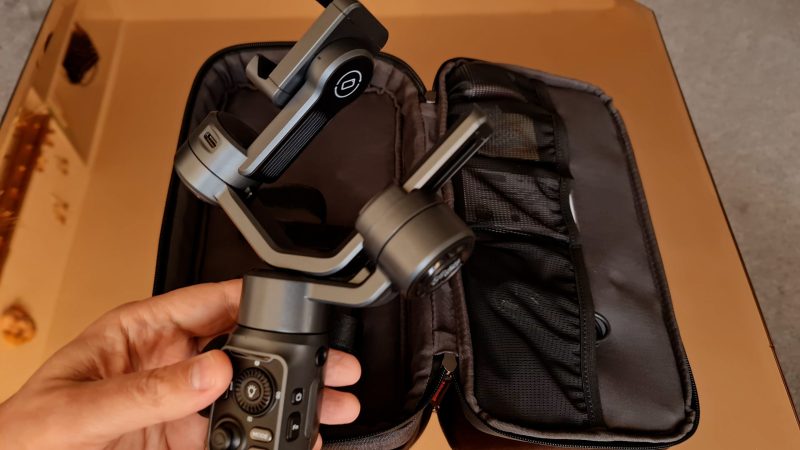

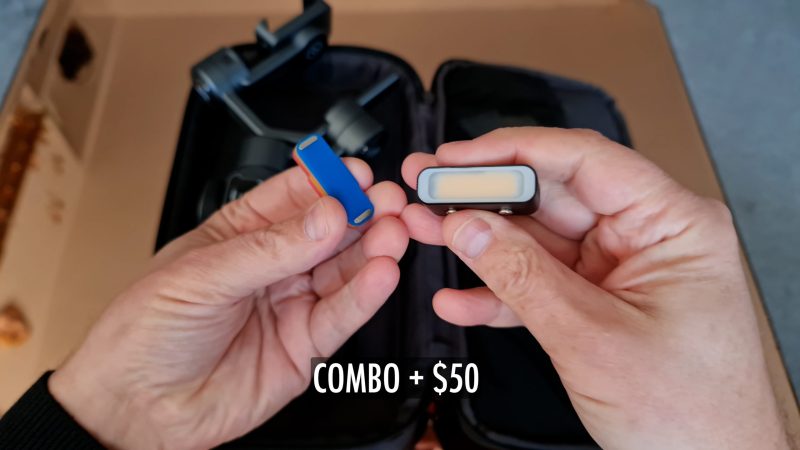
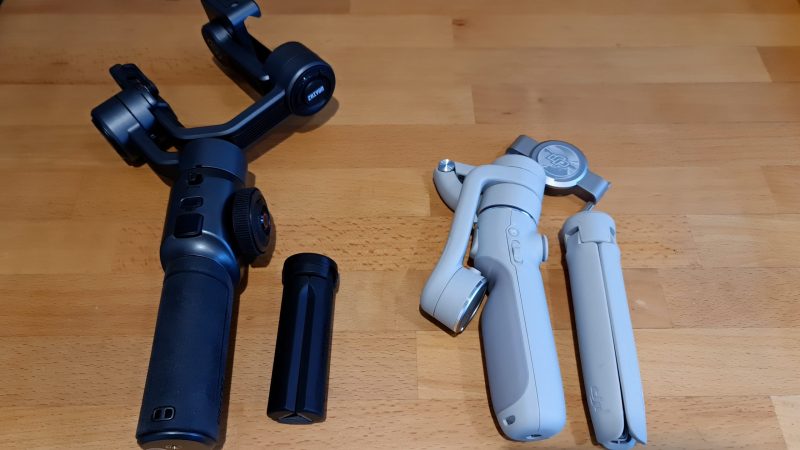

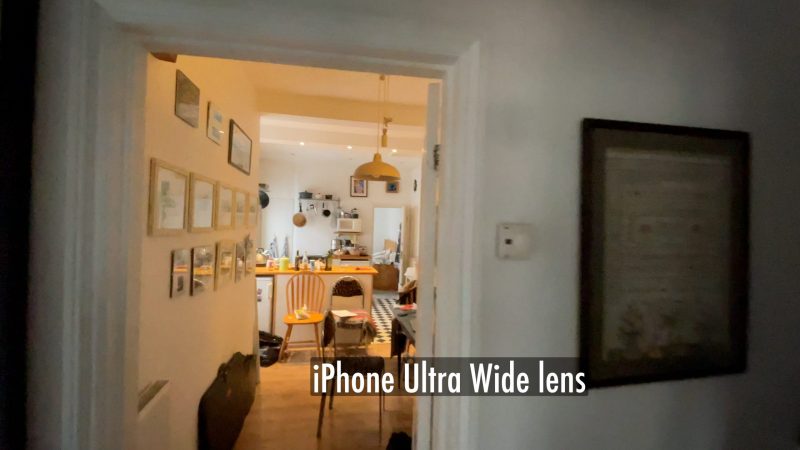
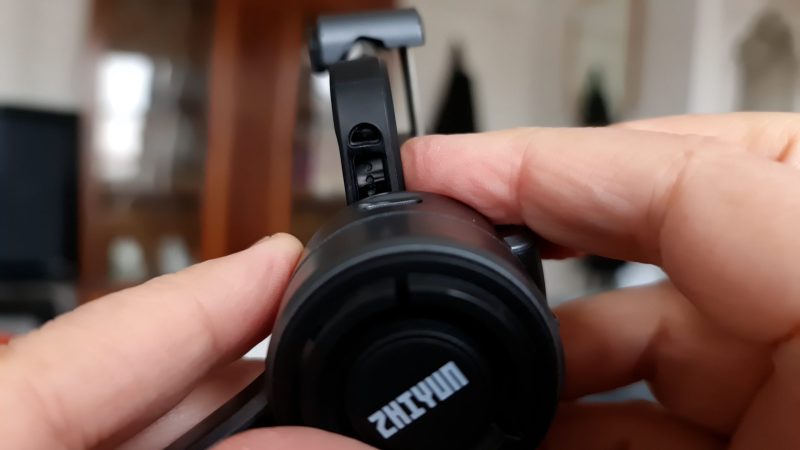
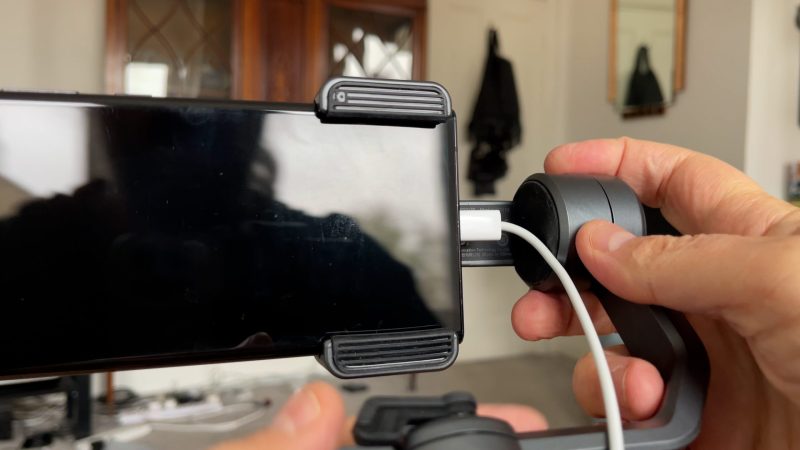
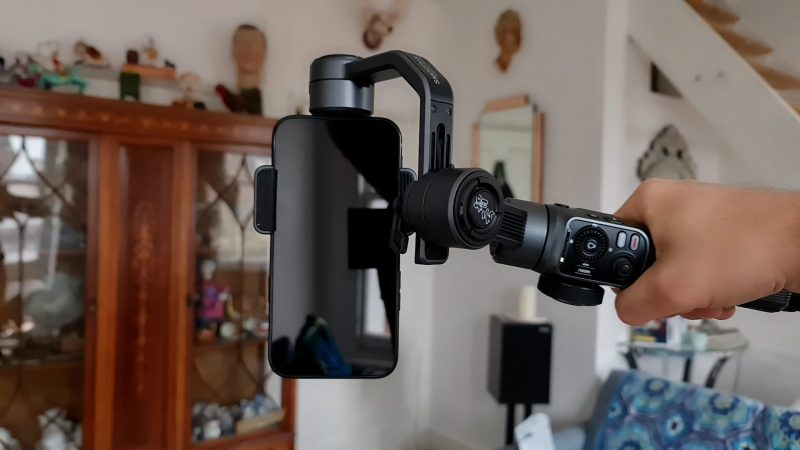


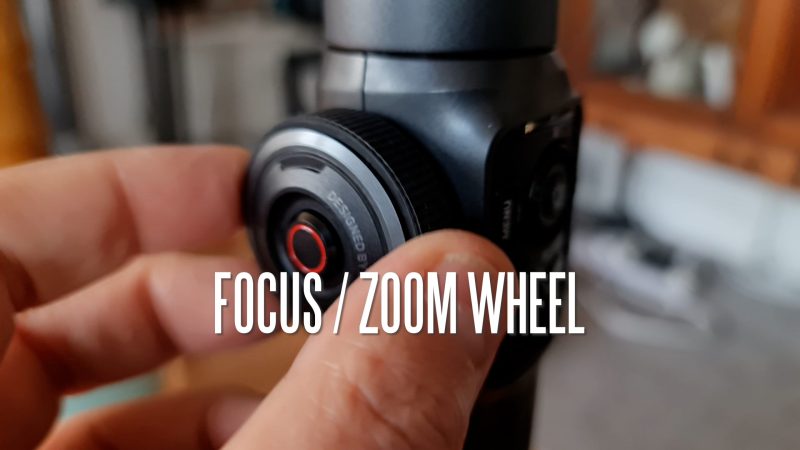
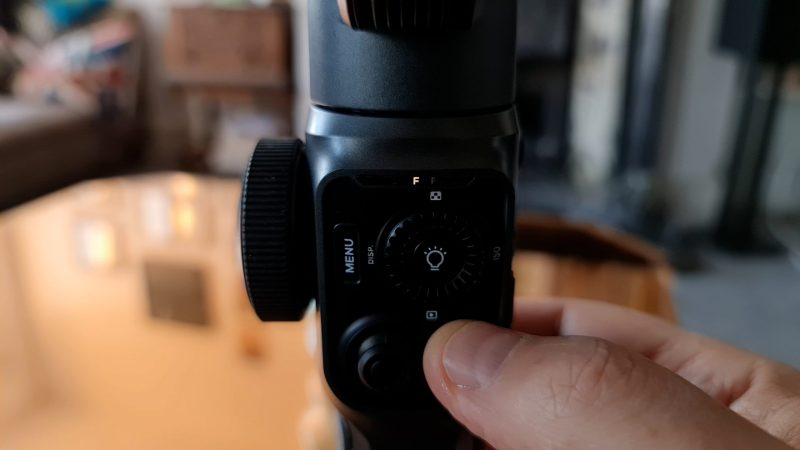
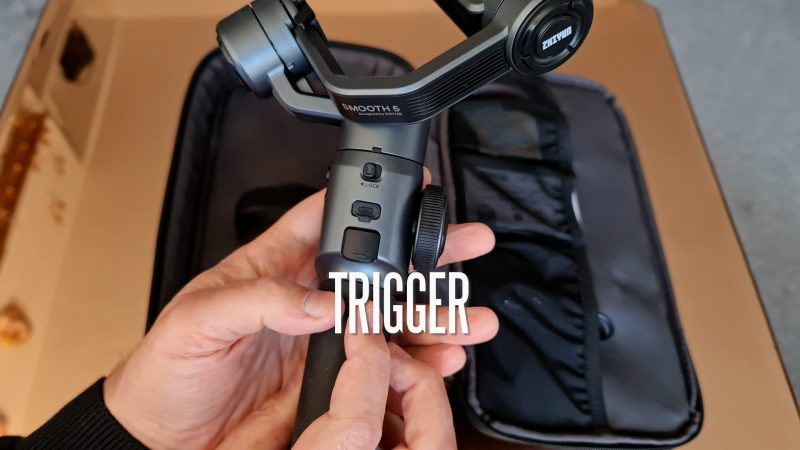

Hey Simon! Great video, however I’m still really struggling with basic set up. Once the phone is mounted and I believe I have it balanced correctly…do any of the axis points need to be relocked? When I hold my gimbal the same way you do it’s not tracking and I’m looking at the back of the phone. Clearly I’m doing something incorrectly. Seeing as how this is a newer product, few tutorials exist. I hope you can help a beginner. TIA
all motors should be unlocked. Make sure the phone is facing the right way and the arms are also correctly placed
Hello Simon,.
Thank you very much for the video. I have two questions, one mechanical and the other software.
The Roll axis arm latch on my gimbal is sort of loose, broken. It feels like a loose tooth that can drop at any time. How can that one be fixed?
Secondly, how can one activate Smart follow mode (picture) below? It reminds me of what I saw you demonstrate on MIMO app DJI 4, where the M button is programmed. In the case of Smooth 5, the user guide says, “Trigger Button
Single press: Enable/disable SmartFollow in ZY Cami app” I did, but got negative response. Any ideas would be appreciated.
*Sorry pic from GizmoChina can’t be pasted here
How well does the variable speed pan and tilt work? Can I do a slow pan with this control? Is there much range to the speed variation?
Not being able to go to portrait mode with the touch of a button like the OM-3 is a bit of a pain. If we want to use the device as a tripod with the camera in portrait mode, how do we do that?
Hello, I love the smooth 5. I am using it with filmicpro, with StaCam andZY Cami. What I don’t understand why with StaCam you can control zoom and focus with the wheel, toggling between with the wheel center button. Why can’t you toggle with FilmicPro or ZYCam? I will ask same question with filmicpro team.
Thanks
Can we pause video while shooting (pause/resume buttons) ?